What length is best? Is it possible to go too short? Are long stems good for anything at all? All the answers are here.
Length is everything
A stem’s stated length is not simply the length of the whole stem front-to-back. Stem length is measured from the middle of the headset stem cap bolt to the middle of the handlebar. Got it? Good. See the pic below for how to measure (it’s a 70mm stem).
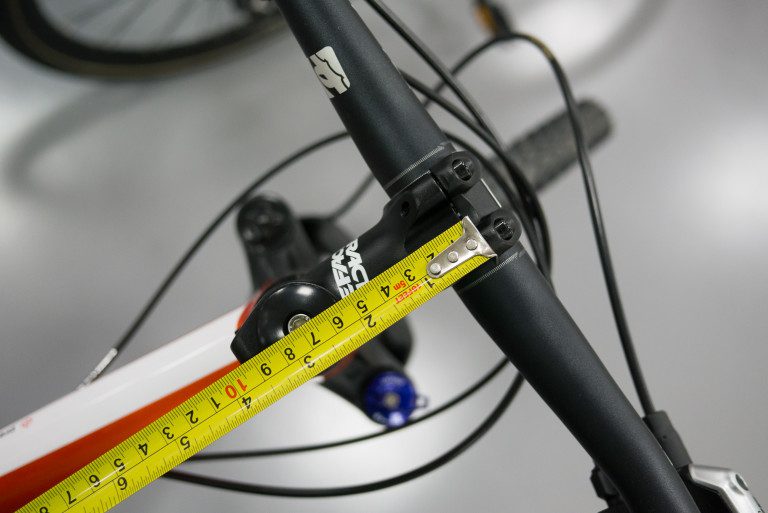
The reach of your bike is governed by the top tube length, saddle rail position and stem length / angle. However, stem length plays a large role in how a bike actually handles. Stem length is extremely significant when mountain biking. It is one of, if not THE most important aspects that governs how a bike handles.
It is worth considering your own physiology too. Do you have a shorter spine and longer legs? Longer spine and shorter legs? Your own anatomy and the reach of your bike can affect your ideal stem length.
A stem that is too long makes for a mountain bike that is unwieldy on descents. When the terrain tilts downwards your weight quickly gets placed in front of the front wheel axle and this places you much closer to the going-over-the-bars tipping point.
Get Shorty?
So just get the shortest stem you can get hold of, right? It’s not that simple.
A bike without enough reach can be uncomfortably cramped and prone to wandery climbing. Your bike’s top tube length is going to dictate just how short you can go before you start to encounter too many negative handling traits.
If you have a bike with a short top tube then putting a short stem on it will probably not result in good handling. It will be like riding a bike that’s too small for you. You will find it hard to ‘work’ the terrain and you’ll be generally unbalanced from being so upright.
On most modern mountain bikes you should be aiming for a stem length somewhere between 50mm and 80mm.
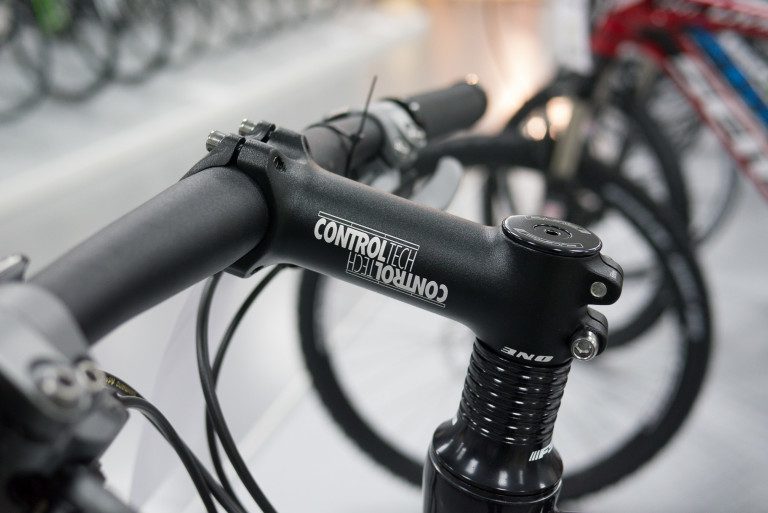
Long stems are more stable when climbing using narrow handlebars. That’s it. Which brings us nicely to…
A quick note about handlebar width
Handlebars work in conjunction with stems to dictate where your hands end up and thus your overall front end weighting and positioning.
Some riders switching to a significantly shorter stem will benefit from also increasing their handlebar width. It’s a bit hard to explain why here but basically it keeps a bit of the overall reach that they’re used to but adds stability and control.
For example, someone coming from a 100mm stem and 660mm bars should try a new combo of 70mm stem and 720mm+ bars.
There are very few riders (I don’t know of any) who have made the switch to shorter stem and wider bars and not preferred it.

Rise
Stems come in different amount of rise ie. the angle of the stem’s body. Because stems have got shorter over the years, rise doesn’t actually make that much of a difference to bar height any more. There’s only so far up or down a stem can go when it’s short in length.
With mountain biking your front end height is now much more dictated by your handlebars. If you want a higher front end, you need bars with more rise to them. If you want a lower front end, you should try some flat bars.
If in doubt the best place to start is a stem of around 5-6 degrees. Or a zero degree stem if you’re considering a stem shorter than 70mm. This gives a nice neutral placing of the bar clamp area without committing you to an overly tall or low front end.
Bar diameter
Bar clamp diameter is the diameter of the handlebar where the stem clamps on to it ie. the middle.
If your mountain bike is even remotely new it will have a handlebar clamp diameter of 31.8mm. The previous standard diameter size was 25.4mm. If you’re unsure just grab hold of a tape measure or a ruler and have a quick look. It’ll be obvious which of these diameters it is.
Because this is the mountain biking industry and we love introducing new ‘standards’ every five minutes there is now another new clamp diameter standard on the market: 35mm.
If you want to add even more stiffness up front then consider making the move to 35mm. Bear in mind that you’ll need a new handlebar as well as a stem and they’re currently aren’t that may companies supporting the 35mm size just yet.
Construction
Virtually all stems are made from aluminium. Steel is reserved for super cheap bikes and kids bikes. Titanium used to be in vogue in the 90s but these days carbon fibre is the material of choice for those with more money (than sense).
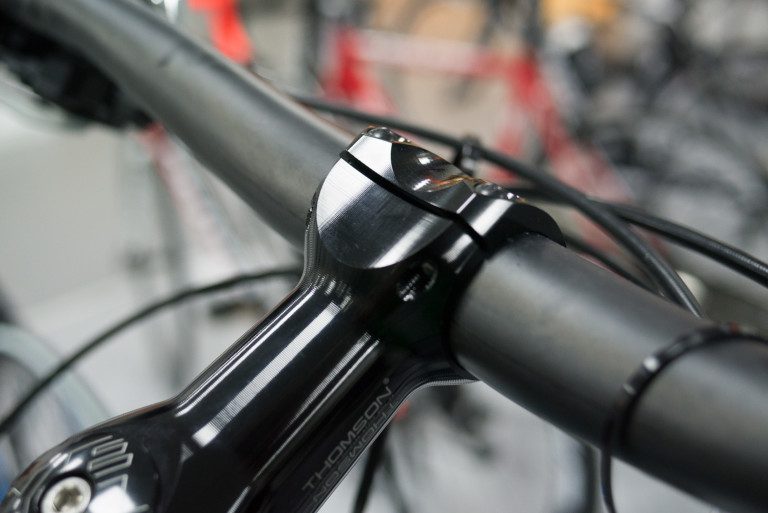
CNC machined aluminium stems cost more than forged and welded stems but they often stiffer. Some people also just like the look of CNC’d stuff. Which is fair enough.
Clamp design
There are two clamps on a stem. A handlebar clamp at the front and a fork steerer clamp at the back.
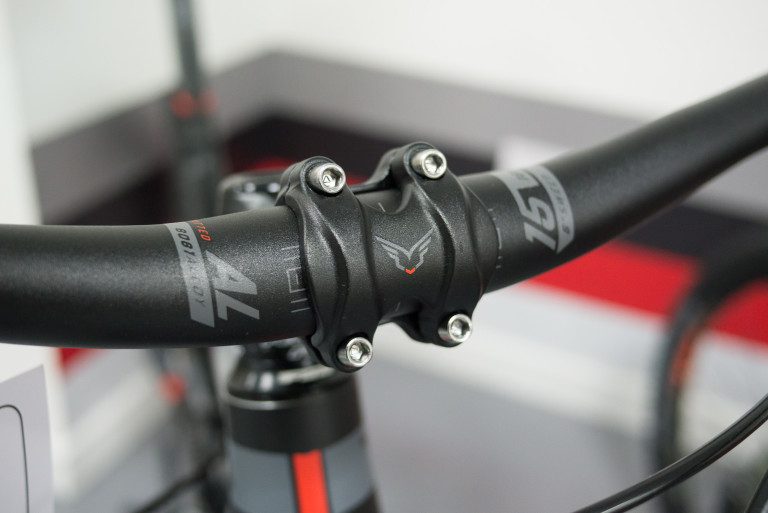
Almost all decent stems use a 4-bolt design for the front bar clamp. Strong, stiff and less creak-prone than old fashioned 2-bolt face plate designs.
The rear clamp – where the stem fits on to the fork steerer – sees a tiny bit more variation in design. The vast majority use a 2-bolt design. Some DH stems use a big single bolt at the back. Some longer XC stems use a wedge design with the bolt situated in the body of the stem in front of the fork steerer.
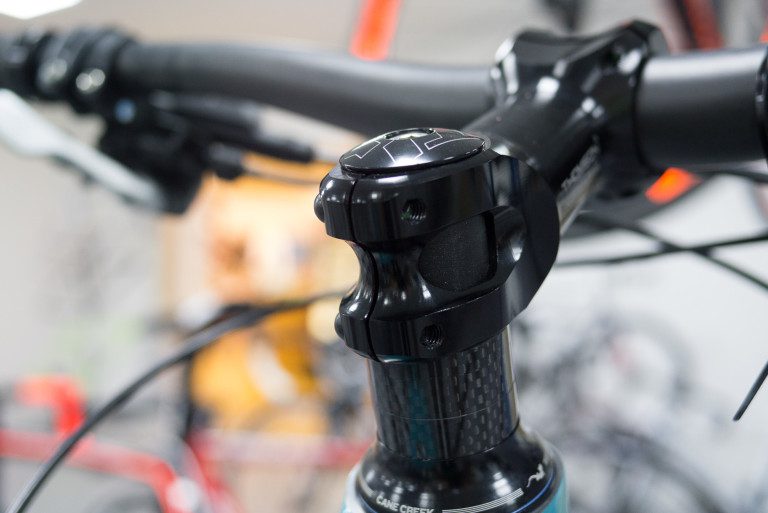
It’s a good idea to look out for a stem that doesn’t have rear clamp bolt heads that protrude too far out. These can really hurt your knees if you crash. Most decent stem designs have cowled or rounded-off bolt head designs.
Which mountain bike stem should you buy?
Leisure riders – Don’t worry too much about weight and clamp design. Get a 80mm or shorter stem that fits your handlebar and that’s it. As usual, check the sale sections for bargains.
Regular riders should try as short a stem as their bike frame’s top tube allows before it gets too cramped. There’s not many riders who’ve regretted slapping on 60-70mm stem and enjoying the immediate handling benefits.
Racers will want to avoid heavy stems but the key quality they should look for in a stem is stiffness. CNC stems should be on your shortlist. Spendy racers may wish to consider carbon. There’s also the new 35mm standard if you don’t mind buying a new handlebar as well.

Thanks for the leads. Very useful information. I am definitely changing to a 35mm short with new handlebars…but not carbon.